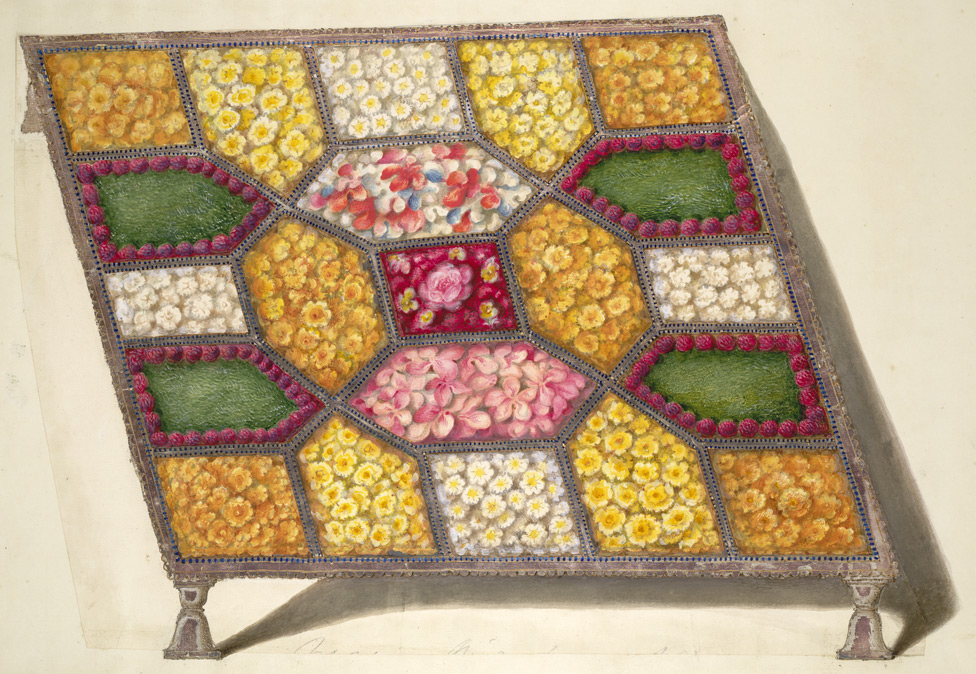FWP:
For background see S. R. Faruqi's choices. For more on Ghalib's unpublished verses, see the discussion in {4,8x}. This verse is from a different, unpublished, formally identical ghazal,, and is included for comparison. On the presentation of verses from unpublished ghazals like this one along with formally identical divan ghazals, see {145,5x}.
This verse presents the intriguing figure of the 'Flower-picker of spectacle'. Who or what is this figure? Thanks to the iẓāfat , the figure may be a flower-picker who himself is 'Spectacle', or one who pertains to 'spectacle' in some way (creating it, being created by it, being associated with it).
Since the grammar of the verse is 'A,B', it's also not clear whether we should take the subject of the first line, 'imagination', to be the same as the 'Flower-picker' in the second line (2a), or whether 'imagination' should remain non-personified, so that the Flower-picker creates it, or uses it as a tool (2b).
Whoever he may be, the 'Flower-picker of spectacle' is not equipped with all the fantasy and invention and other glories of imagination-- and nobody valued the power of the human imagination more highly than Ghalib (just remember {5,4}). Rather, this seemingly versatile, widely-ranging figure offers only visions of the past: all his colors and attractions are those of a 'gone-away' [raftah] garden. (We've had that melancholy Persian grammar lesson about raftah in {3,4}.)
Do all our human imaginings, all our powerfully creative mental capabilities, come down only to cheap tricks designed to soothe the heart, like shiny toys dangled before a small fretful child?
Compare the ambiguity of the 'Card-player of thought' in {81,2}. Along different lines, compare the heart-placating role of Paradise in {174,10}.

Zamin:
The ignorant heart, like a stubborn child, is sulking/pouting-- probably for the True Beloved, or for some other childish demand that is not in its power to fulfill. To amuse it, the imagination is collecting withered 'flowers of spectacle' from the garden of the time of past pleasures (perhaps to provide a bouquet).
== Zamin, p. 362